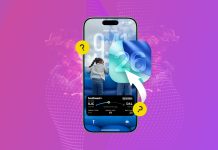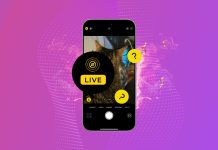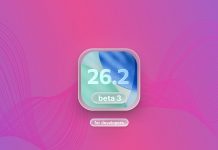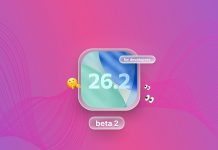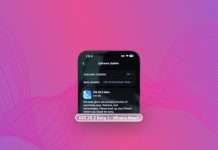
It’s already July, which means we’ve officially entered the month Apple promised to roll out the public beta of iOS 26. That hasn’t happened yet, instead, developers received beta 3 – a build that offers a better look at where Apple’s going, even if we’re still waiting on the broader release.
We covered the beta 2 update in detail last month, and compared to that, this third build doesn’t shake things up quite as much. Still, a few key changes and system refinements stand out. Apple continues to adjust the design, fix the rough edges, and quietly test the features it previewed at WWDC. So while the list of changes isn’t long, there’s enough here to pay attention to.
Table of Contents
Where Did Liquid Glass Go in Beta 3?
The most noticeable changes in iOS 26 beta 3 focus on the design, and more specifically, the Liquid Glass interface. After the WWDC presentation, this feature quickly took over every comment section, thread, and tech blog. Some called it innovative, others called it unreadable, confusing, and “the worst design Apple has ever pushed.”
It didn’t take long for Apple to respond. Beta 2 already pulled back on the original version, softening the transparency in several places. Beta 3 takes it even further, and at this point, the original idea feels almost unrecognizable. Here’s what changed:
The blur effect in Control Center and Notification Center looks much less intense now. In beta 2, Apple already dulled the glassy background slightly, but beta 3 turns it into a soft frosted panel with more opacity and less visual noise. Buttons and toggles look sharper against the background, and text now feels easier to read. The styling still fits the iOS 26 direction, but it no longer screams “new design” at first glance.

If you want to see just how much Apple scaled back the Liquid Glass effect, open the Music app. In Library and Now Playing views, the vibrant glass background now looks mostly opaque. The blur over album covers and interface elements barely exist anymore. The red header bar in Library, which once let colors peek through softly, now acts more like a sheet of frosted film glued on top. It works, but it also feels a lot less dynamic than before.

Safari followed the same path. The address/search bar now uses a solid white background, which improves contrast but drops the glossy aesthetic. Previously, as you scrolled, the blurred background created a light, layered feel. That has vanished. In beta 3, the effect feels more static. Functional, yes – but not what Apple showed onstage.

Maps saw a similar design rollback. Panels that once used transparent layers now look closer to solid cards. The business info panel added more structure and alignment updates, which help with clarity, but the new glass effect appears faint. The navigation banner now supports Liquid Glass, which sounds like progress, until you realize how subtle the difference is. The sharp layering from earlier betas no longer stands out.

Oddly enough, Notes went in the opposite direction. The contextual menu here gained a thicker blur, making the background feel more like the original Liquid Glass concept. It’s one of the few places where beta 3 brought the design forward instead of pulling it back. Why only Notes got this treatment remains a mystery, but we’ll take it.

To be honest, this isn’t what we hoped to see. The first beta looked bold. Apple took a risk, and we were excited about it. Now, most of that style feels stripped away. What once looked like polished glass now resembles frosted plastic (and not the good kind). No smooth transitions, no vivid overlays, just a quieter, safer look.
At this point, it would make more sense to introduce customization. Let people decide. Keep the original Liquid Glass for those who liked it, and offer a minimal version for those who didn’t. Because right now, it feels like Apple listened to the loudest critics and ignored everyone who actually enjoyed the new style. And if Liquid Glass disappears completely by the time the public beta arrives, we’ll know exactly who won the argument.
Fixes You’ll Notice Without Reading a Beta 3 Changelog
Alongside the visual changes, beta 3 delivered a long list of bug fixes. The full breakdown appears in Apple’s official release notes, of course, but we’re not here to list every obscure framework tweak. Instead, here’s what actually stood out – the most noticeable fixes that affect how the system works on a day-to-day basis.
- The Dock finally works like it should. In beta 2, icons sometimes stuck to the left side if you didn’t fill all four spots, like they forgot how centering works. Beta 3 fixed that. The Dock now behaves like a Dock again.
- Safari also stopped freezing when opening links in the background. In the previous beta, some tabs would act like they loaded just fine, until the browser locked up and refused to scroll. That glitch seems gone now. You can open ten tabs in the background and the app holds up.
- Apple also smoothed out animation performance in the Messages app when using animated wallpapers. Beta 2 started to improve it, but you still saw frame drops. Beta 3 took things further – scrolling feels smoother, transitions stopped stuttering, and Messages no longer collapses under the weight of its own visual effects.
- Another annoying issue from beta 2 involved keyboards missing keys in Apple’s own apps. You’d open Notes or Mail, and half the keyboard just wouldn’t show up. You could still type if you guessed where the invisible letters were, but now that mess is gone. All keys show up like normal.
- One more fix worth mentioning: the adaptive depth effect in wallpapers and contact posters stopped breaking. In beta 2, anyone who upgraded from beta 1 noticed the adaptive clock lost its layering. Beta 3 brought that depth back. It may be a small fix, but if you stare at your lock screen a lot, you’ll notice it.
In short, beta 3 didn’t just polish the visuals, it also patched some of the rough spots that made daily use feel unpredictable. Not everything’s perfect, but the progress is clear. At least for now, the OS looks less like a prototype and more like something meant for real people.
Is There Anything Actually New in Beta 3?
Most of iOS 26’s headline features already showed up back at WWDC, so no one expects these betas to deliver game-changers. By this point, we’re deep into the refinement phase (minor tweaks, polish, and the occasional leftover surprise). Still, beta 3 managed to sneak in a few fresh details.
First, Apple added new default wallpaper options. The original iOS 26 background is now available in several flavors: Shadow, Sky, Halo, and Dusk. If the default look felt too bright or too bland, there’s now a version that shifts the mood without ditching the style. These variants follow the system clock, so they change throughout the day, which makes them feel alive, even if you barely notice. It’s a small touch, but it helps keep things from going stale by lunchtime.

Another addition lives in the settings, though you probably won’t stumble into it. Beta 3 now allows the Accessibility section to send notifications. You’ll get a prompt the first time it tries. It’s not entirely clear what Apple plans to do with this, but the option exists, and for people who rely on those tools, it could be useful. Or it could just be another notification to ignore. Time will tell.

Final Thoughts
We’ve gone through the key changes in iOS 26 beta 3. Most of them focus on the visual side, specifically the Liquid Glass design, which Apple continues to adjust with each build. We want to believe this is only a temporary phase before the release of the public beta, because the current design isn’t what we expected or wanted. At least, not for those of us who actually liked the original look. That said, it’s clear that opinions around the design still split the crowd. Some users strongly disliked the blurred, layered style from the start, and Apple seems to have responded to that side.
As for performance, beta 3 clearly improved over beta 2. System animations feel smoother, crashes happen less often, and the phone runs cooler overall. We didn’t notice the same overheating issues that made earlier builds uncomfortable to use for long periods. In short, it looks more stable now, but we’re still waiting. The public beta should land soon, and hopefully, the final version of iOS 26 will strike a better balance between style and usability.

